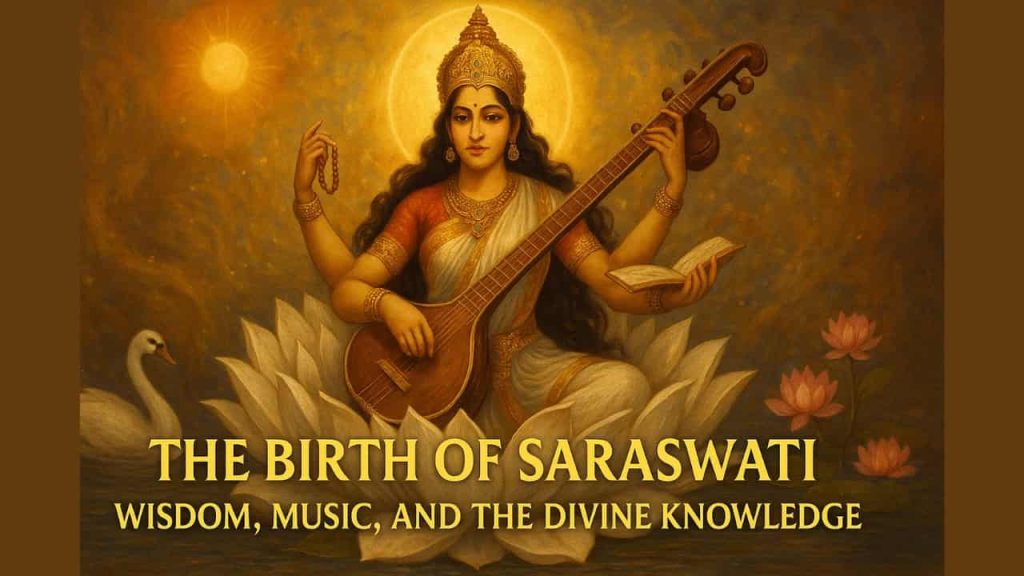
Shakuntala: A Love Born in Silence
In the heart of the forest, where the rustle of leaves carries ancient whispers, a love story unfolded, fragile, divine, and destined for trial. Shakuntala, the daughter of sage Vishwamitra and the celestial nymph Menaka, was raised in the hermitage of Sage Kanva.
Her life was simple, her spirit serene, until King Dushyanta arrived, and the forest bore witness to a union that would echo through time. Their meeting was not orchestrated by fate alone but by the quiet magnetism of two souls drawn together in nature’s embrace. The forest, untouched by politics and power, became the cradle of a love that defied convention.
Shakuntala’s innocence and Dushyanta’s nobility created a bond that felt eternal, yet destiny had its trials prepared. This tale, immortalized by Kalidasa, is not just a romance; it is a meditation on memory, identity, and the silence that holds truth.
The Meeting of Souls
Dushyanta, a noble king on a hunting expedition, stumbled upon the hermitage and was captivated by Shakuntala’s grace. Their love blossomed not in palaces but beneath trees, beside rivers, and in the quietude of nature. They married in the Gandharva tradition, without rituals, but with hearts entwined.
The forest became their witness, and the birds their bards. Their union was sacred, untouched by societal norms, and rooted in mutual respect. Shakuntala, though raised in ascetic surroundings, carried the dignity of a queen. Dushyanta, though a ruler, bowed before the purity of her spirit. Their love was immediate, intense, and poetic, like a verse written by the gods themselves.
The Curse of Forgetfulness
As Dushyanta departed, promising to return, Shakuntala, lost in thoughts of her beloved, failed to greet Sage Durvasa.
- The sage, known for his fiery temper, cursed her: the one she loved would forget her.
Though the curse was softened, he would remember that upon seeing a token, the damage was done. The ring Dushyanta had given her, the symbol of their bond, was lost in the river.
This moment marks the turning point of the tale. The curse was not just a magical spell; it was a metaphor for how love, when not nurtured, can fade. Shakuntala’s distraction, though innocent, led to a divine punishment that mirrored human forgetfulness. The ring, a simple object, became the key to memory, identity, and reunion.
The Journey to the Palace
Pregnant and hopeful, Shakuntala journeyed to Dushyanta’s court. But the king, bound by the curse, did not recognize her. Her words, her tears, her truth, all were met with disbelief. Rejected and heartbroken, she returned to the forest, where her son Bharata was born.
This journey was not just physical; it was emotional, spiritual, and symbolic. Shakuntala’s walk from the hermitage to the palace was a pilgrimage of love, pain, and resilience. Her rejection was not just by a man but by a world that failed to see her truth. Yet, she did not curse fate. She embraced motherhood, solitude, and silence, allowing time to heal what memory had erased.
The Ring and the Realization
Fate intervened when a fisherman found the lost ring inside a fish and brought it to the king. The moment Dushyanta saw it, memories flooded back. Remorseful and desperate, he sought Shakuntala, who had withdrawn into the forest, her love wounded but not extinguished.
The ring’s return was not just a plot device; it was a symbol of how truth resurfaces, even when buried. Dushyanta’s realization was profound. He saw not just the woman he loved but the pain he had caused.
His journey to find her was a redemption arc, a king seeking forgiveness, a lover seeking reunion, a soul seeking peace.
Reunion and Redemption
Their reunion was not just of lovers but of souls tested by fate. Shakuntala forgave, not because she had forgotten the pain, but because love, when true, transcends even divine curses.
Bharata, their son, would grow to be a great emperor, his name etched into the very identity of India.
The reunion was quiet, sacred, and transformative. It was not dramatic but deeply emotional. Shakuntala’s forgiveness was her strength. Dushyanta’s remorse was his awakening. Together, they rebuilt what fate had fractured. Bharata’s birth and legacy became the fruit of their union, a child born of love, loss, and resilience.
The Forest as Witness
The forest in this tale is not a passive setting; it is a living witness. It shelters love, absorbs sorrow, and echoes truth. It is where Shakuntala was born, where she loved, and where she returned when the world failed her.
Nature in Indian mythology often plays the role of a silent guardian. Rivers, trees, and animals are not mere scenery; they are sacred participants. In Shakuntala’s story, the forest becomes a temple, a refuge, and a mirror to her soul.
The Silence Between Words
Silence plays a profound role in this tale. It is in silence that Shakuntala falls in love, suffers, and heals. The absence of recognition, the pause before forgiveness, and the quiet of the forest all carry meaning.
In mythology, silence is often more powerful than speech. It holds that words cannot express. Shakuntala’s silence is not weakness; it is wisdom. It is the space where love waits, where memory returns, and where the soul speaks.
Themes and Reflections
This tale offers timeless themes that resonate across cultures and eras:
- Memory and Identity: The curse symbolizes how love can be forgotten when not nurtured
- Nature as Witness: The forest is not a backdrop but a character, silent, sacred, and sheltering
- Divine Trials: Even celestial love must endure suffering to attain depth
- Feminine Strength: Shakuntala’s grace, patience, and dignity define her heroism
- Redemption: Dushyanta’s journey from forgetfulness to realization is a path of spiritual growth
- Silence and Truth: The quiet spaces in the story hold the deepest truths
- Love Beyond Ritual: Their Gandharva marriage reflects love that transcends societal norms
- Maternal Courage: Shakuntala’s strength as a mother is as profound as her strength as a lover
- Time as Healer: The passage of time restores what was lost, deepens what was shallow, and reveals what was hidden
Legacy of Bharata
Bharata, born of this union, would become a legendary emperor. His name would be given to the land, Bharat. His rule was marked by justice, wisdom, and strength. But his legacy began in the forest, in the arms of a mother who raised him with dignity and love.
Shakuntala’s story is not just hers; it is the foundation of a civilization. Through Bharata, her pain transformed into power, her silence into sovereignty.
The Forest Remembers
Shakuntala’s story is not just about love lost and found. It is about the silence that holds truth, the pain that deepens devotion, and the memory that returns when the soul is ready. In the forest’s hush, her tale lives on, a reminder that love, though tested, endures.
The forest, which bore witness to their union, also sheltered their separation and reunion. It remembers not with words but with wind, leaves, and rivers. Shakuntala’s legacy is not just in Bharata’s empire but in every heart that has loved, lost, and hoped again.
And when it does, it returns not as it was, but as something deeper, wiser, and more eternal. In the quiet corners of the world, where memory lingers and truth whispers, Shakuntala’s love still lives.

